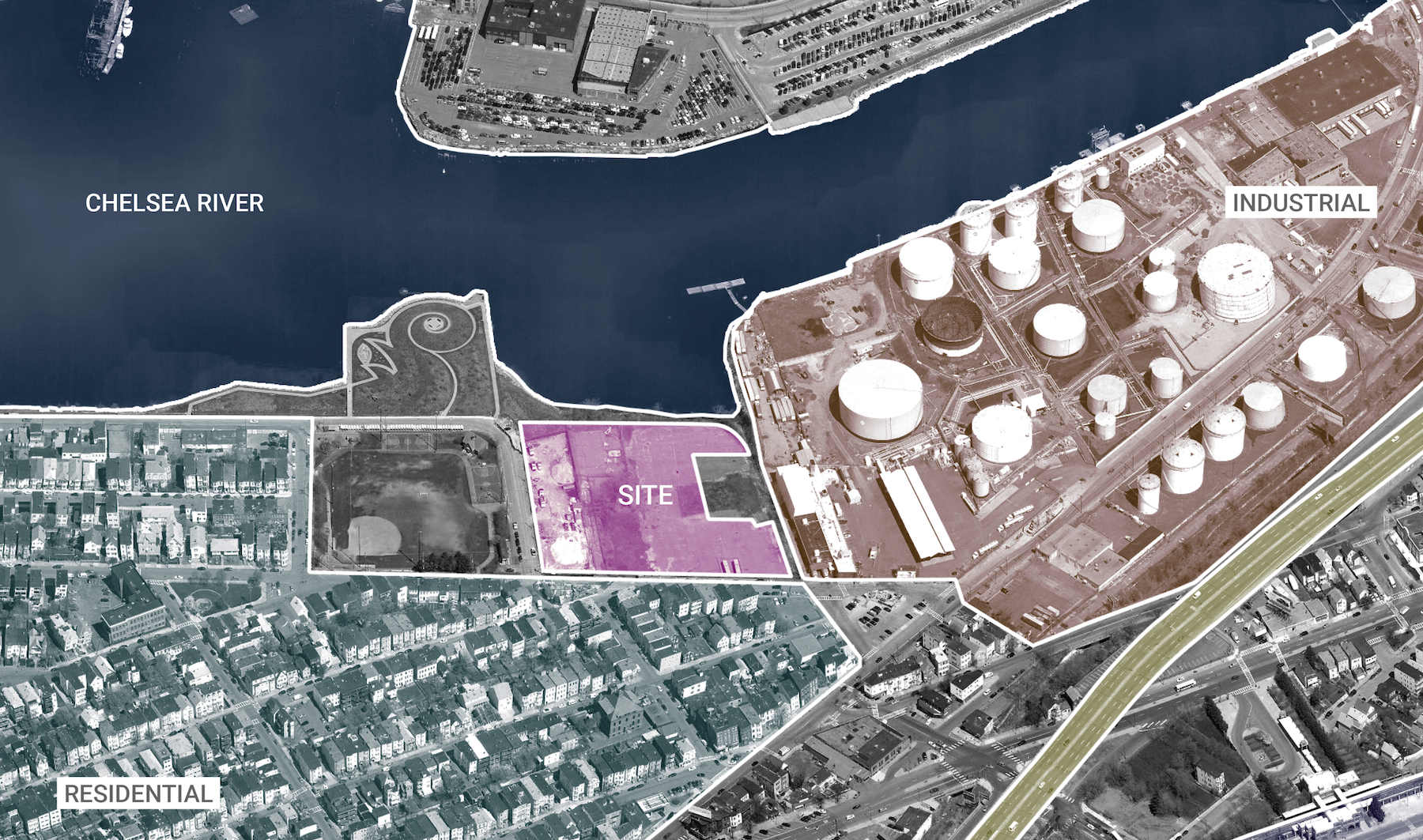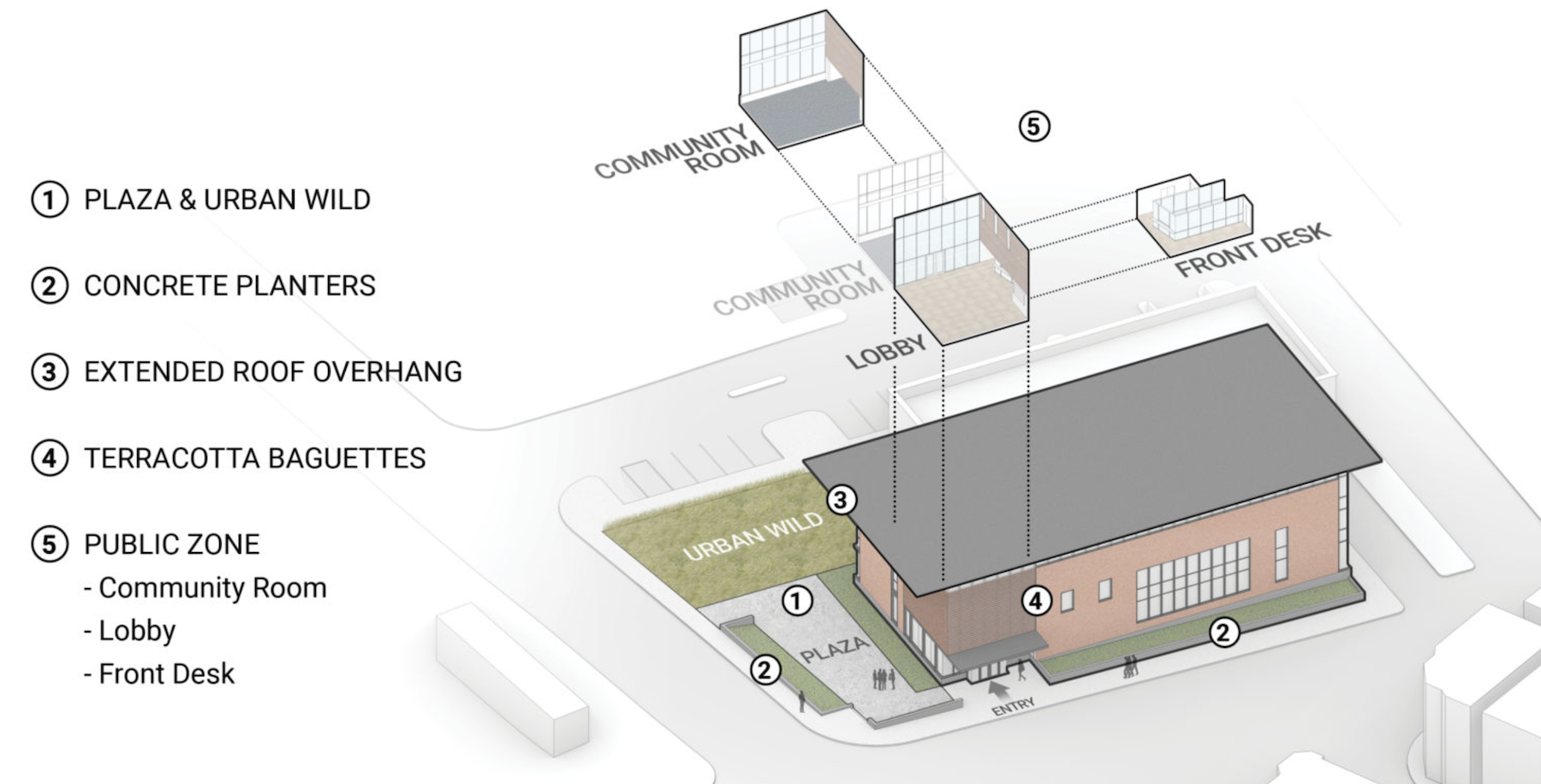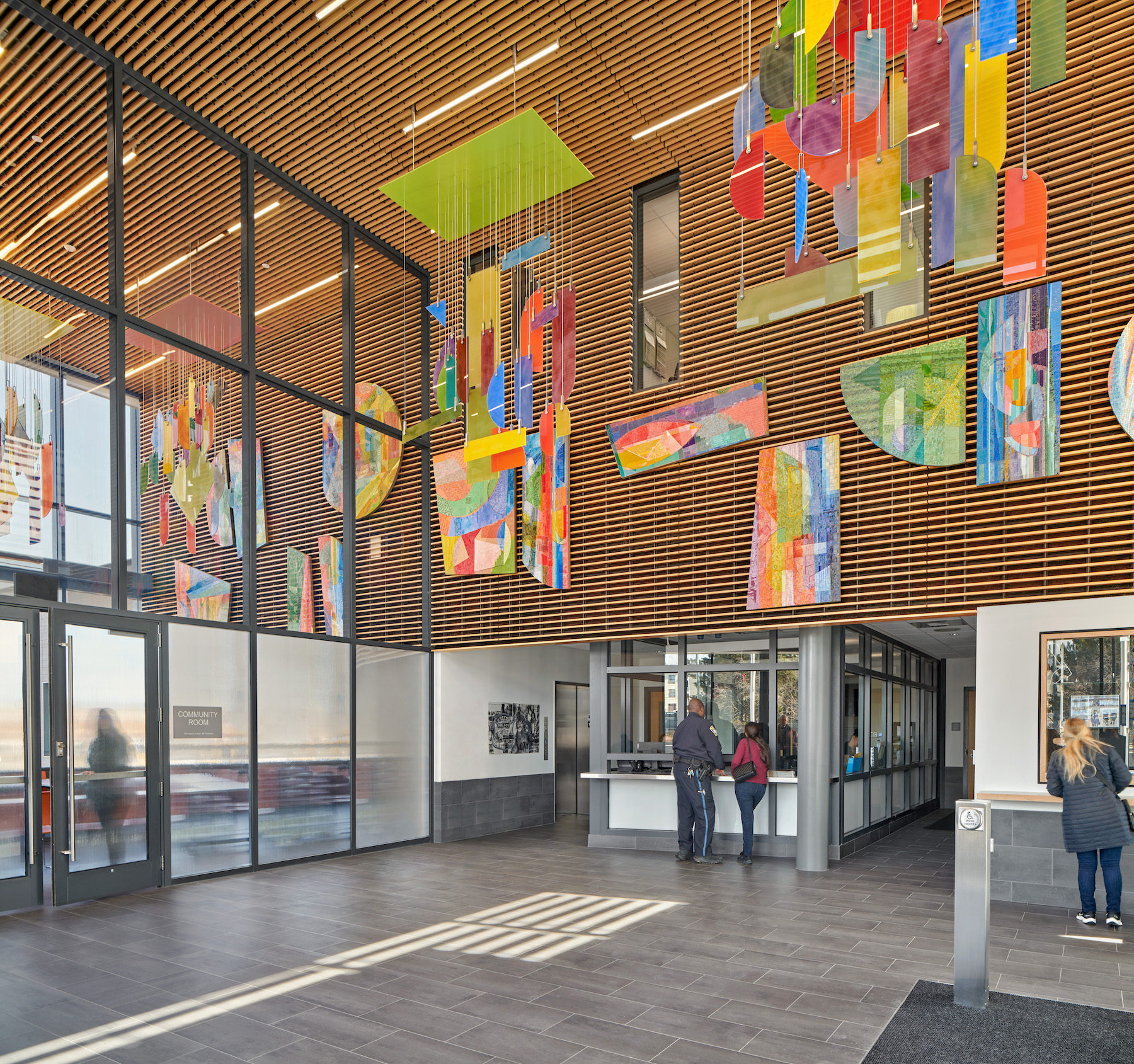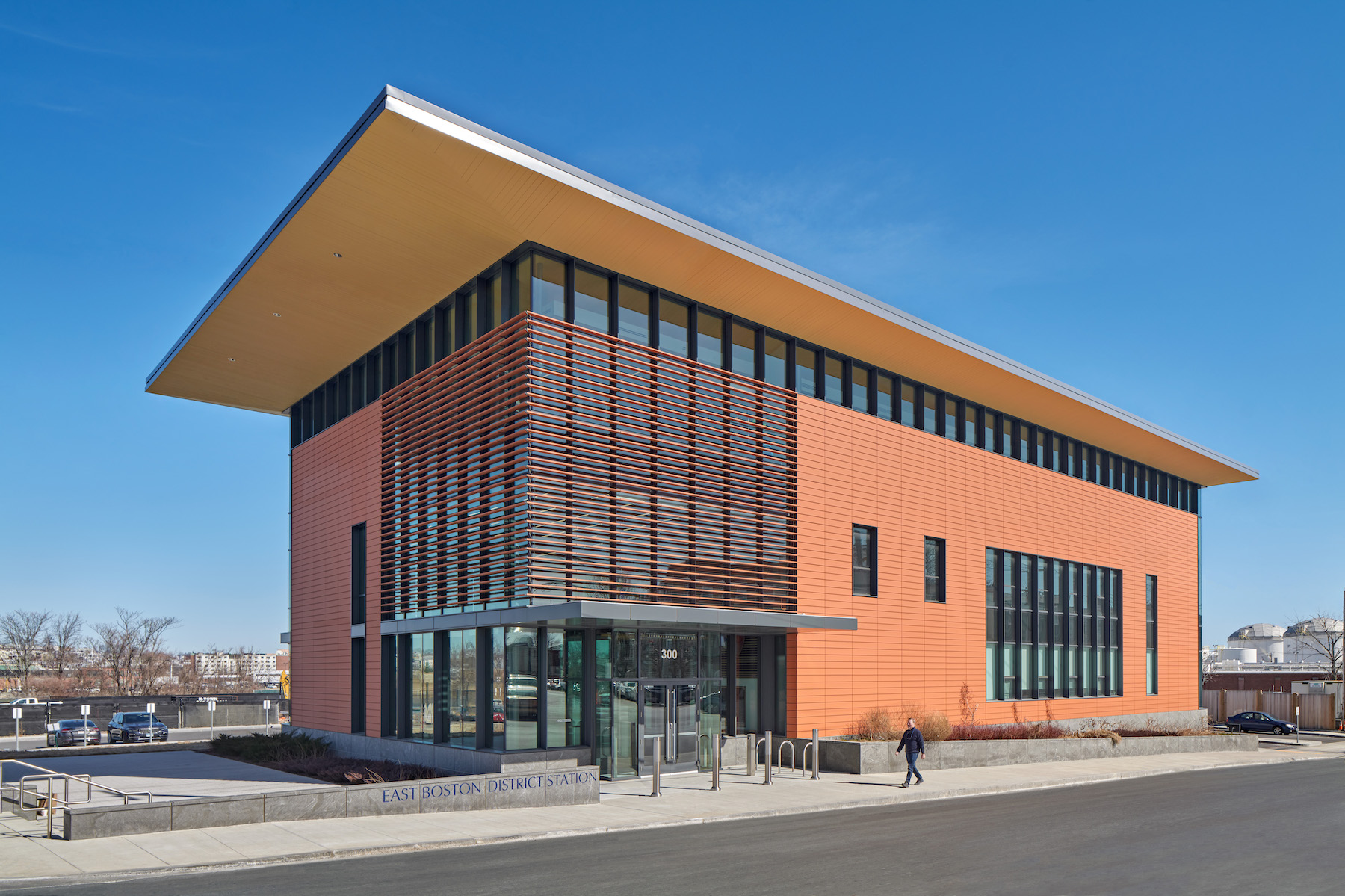A 2022 Gallup poll found that only 45 percent of surveyed American adults was confident in the police as an institution, down five percentage points from the previous year. That level of confidence dropped to 30 percent among non-white Americans polled.
Mistrust of the cops, exacerbated by high-profile incidents of law enforcement turned abusive and deadly, is not a problem with one answer, nor can appearance be a substitute for real reform. But can a building for whose design a community weighs in be part of the solution?
When the new Area 7 police station opened in East Boston, Mass., last January 1, it represented Beantown’s first new station in more than a decade, and as importantly a symbol of that city’s efforts to improve the relationship between its police force and the public at a time when community relations—in Boston as across the country—have been fraught with enmity.
Leers Weinzapfel Associates (LWA) designed the $25 million 27,500-sf East Boston District Station in collaboration with the City of Boston Public Facilities Department. The design followed several public meetings to hear the community’s opinions about the project, public safety, traffic, and accessibility, according to the boston.gov website, which reported the total cost for this project at $29.9 million.
“An investment in our municipal buildings is an investment in our City workers and our residents. This new state-of-the-art station provides the working environment our officers deserve and creates a more accessible experience for the local community,” said Boston’s Mayor Michelle Wu when the station opened.

A less threatening and efficient environment
The new station was moved from the old station's location to enhance community access, improve dispatch response times by being closer to main transport arteries, and to serve as a sustainable, resilient facility (it’s certified LEED Silver) along the Chelsea River, where the building is positioned as a kind of “mediator” between this urban neighborhood’s industrial, commercial, and residential landscapes.
According to LWA, the station’s granite and terracotta structure responds to the scale of surrounding residential and public buildings. A corner of the station features a glass entry, lobby, and community room that coalesce to form a sun-filled public zone. Within the building, occupied spaces maximize daylight and views. Front supervisory desks have views of public areas and connections to police operations and detention zones. (The main building houses police operations, detective offices, a guard room, and lockers. Secure detention areas are in the rear of the building.)
“We saw this project as an opportunity to architecturally address the hot-button issue of community policing elevating the spaces, and therefore the experiences, where the police and those they serve come together,” said Josiah Stevenson, LWA’s Principal-in-Charge, in a prepared statement.


Stevenson elaborated that the Building Team—which included the structural engineering firm LeMessurier and general contractor J&J Contractors—created a double-height interior and used “warm” materials. The station’s site makes the most of views of the nearby creek and public plaza. A series of glass sculptures, dubbed “Unus Mundus” (”One World”) by its artist Monika Bravo, further accentuates a welcoming environment.
The new facility includes stormwater management and energy efficient systems.

Right after the police station opened, Mayor Wu announced the allocation of $25 million for a new community center in Boston’s North End neighborhood. Last year, Wu announced a $2 billion plan to make the city’s public schools greener through new construction and renovation.
Related Stories
| Sep 24, 2014
Architecture billings see continued strength, led by institutional sector
On the heels of recording its strongest pace of growth since 2007, there continues to be an increasing level of demand for design services signaled in the latest Architecture Billings Index.
| Sep 22, 2014
4 keys to effective post-occupancy evaluations
Perkins+Will's Janice Barnes covers the four steps that designers should take to create POEs that provide design direction and measure design effectiveness.
| Sep 22, 2014
Sound selections: 12 great choices for ceilings and acoustical walls
From metal mesh panels to concealed-suspension ceilings, here's our roundup of the latest acoustical ceiling and wall products.
| Sep 15, 2014
Ranked: Top international AEC firms [2014 Giants 300 Report]
Parsons Brinckerhoff, Gensler, and Jacobs top BD+C's rankings of U.S.-based design and construction firms with the most revenue from international projects, as reported in the 2014 Giants 300 Report.
| Sep 14, 2014
Ranked: Top Veterans Administration sector AEC firms [2014 Giants 300 Report]
CannonDesign, Clark Group, and URS top BD+C's rankings of the nation's largest Veterans Administration building sector design and construction firms, as reported in the 2014 Giants 300 Report.
| Sep 9, 2014
Using Facebook to transform workplace design
As part of our ongoing studies of how building design influences human behavior in today’s social media-driven world, HOK’s workplace strategists had an idea: Leverage the power of social media to collect data about how people feel about their workplaces and the type of spaces they need to succeed.
| Sep 7, 2014
Ranked: Top state government sector AEC firms [2014 Giants 300 Report]
PCL Construction, Stantec, and AECOM head BD+C's rankings of the nation's largest state government design and construction firms, as reported in the 2014 Giants 300 Report.
| Sep 7, 2014
Behind the scenes of integrated project delivery — successful tools and applications
The underlying variables and tools used to manage collaboration between teams is ultimately the driving for success with IPD, writes CBRE Healthcare's Megan Donham.
| Sep 7, 2014
Ranked: Top military sector AEC firms [2014 Giants 300 Report]
Balfour Beatty, Fluor, and HDR top BD+C's rankings of the nation's largest military sector design and construction firms, as reported in the 2014 Giants 300 Report.
| Sep 4, 2014
Ranked: Top courthouse sector AEC firms [2014 Giants 300 Report]
Fentress Architects, Tutor Perini, and AECOM top BD+C's rankings of design and construction firms with the most revenue from courthouse facilities, as reported in the 2014 Giants 300 Report.
















